Visiting Shimogamo Shrine: Why It’s Worth It + Photos
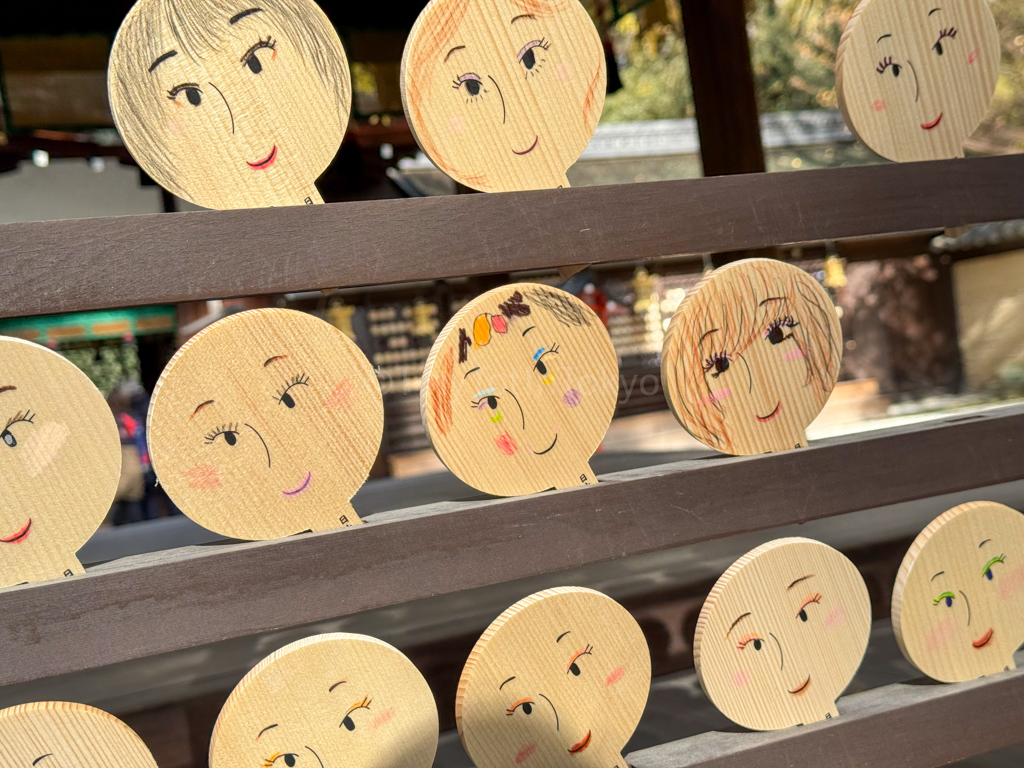
Last Updated on October 6, 2025 by Kay
This post may contain affiliate links, meaning I may earn a small commission on any purchases through those links at zero additional cost to you. Whatever I make goes to keeping this website running and I am forever grateful for the support. See my Privacy Policy for more information.
One of the oldest and most important Shinto shrines in Japan, Shimogamo Shrine dates back to the 6th century. It was visited by the Imperial Family during the Heian period (794 to 1185) and was an important government shrine. Given its significance, Shimogamo Shrine (officially known as Kamomioya Shrine) has been designated a World Heritage Site.
At first glance, Shimogamo Shrine may not seem as impressive as other Kyoto favorites like Fushimi Inari or Kiyomizudera. However, it became beloved by my family after our first visit in autumn. And this isn’t an easy feat — we live in Japan and visit shrines often. When it comes to Shimogamo Shrine, we adore the history, the natural beauty, as well as the serenity of the shrine grounds.
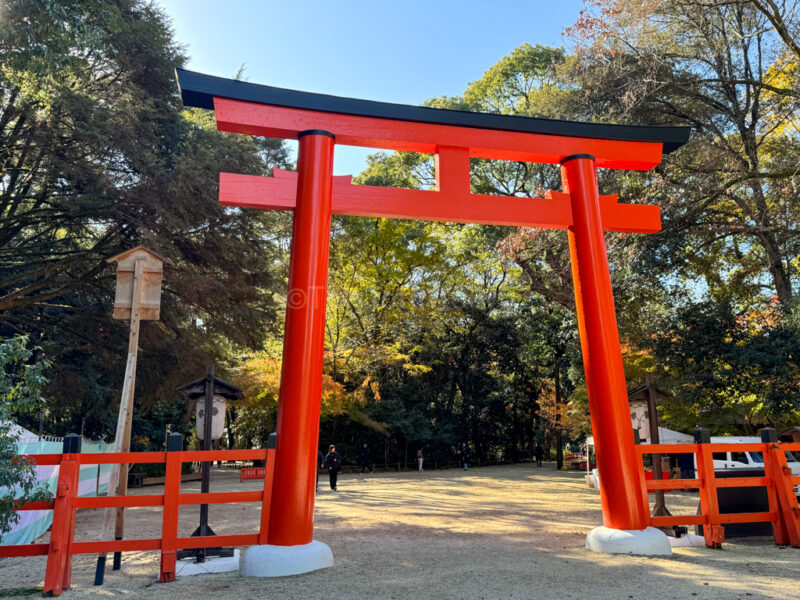
In this article, I’ll share our experience visiting Shimogamo Shrine so you can decide whether it’s worth visiting on your next trip to Kyoto.
Table of Contents
Shimogamo Shrine Grounds
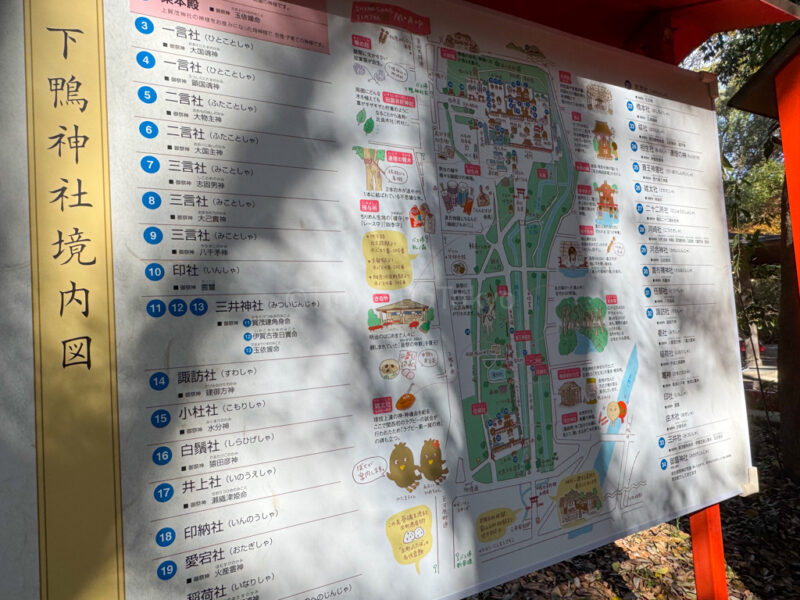
Shimogamo Shrine grounds are located near the Kamo River and are massive. It took us two hours to see everything, and I still feel like we missed out on something.
Thankfully, the shrine’s hours are quite long, from 6 AM to 5 PM, so there’s plenty of time to see everything.

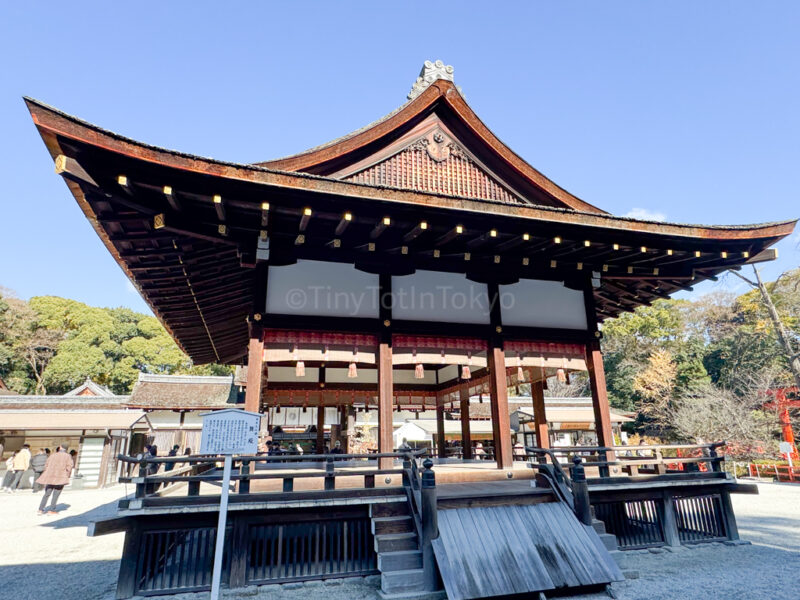
Although many of the structures in the shrine grounds are earth-colored, the inside of the halls is quite beautiful, decorated in gold with intricate details.
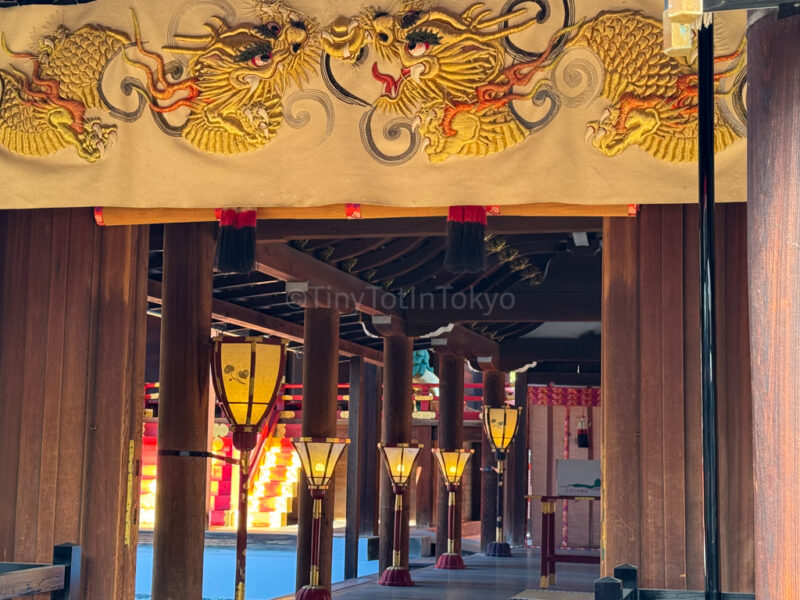
The shrine grounds also have a few structures that are vermillion, which make a stunning contrast with the surrounding nature, especially in autumn.
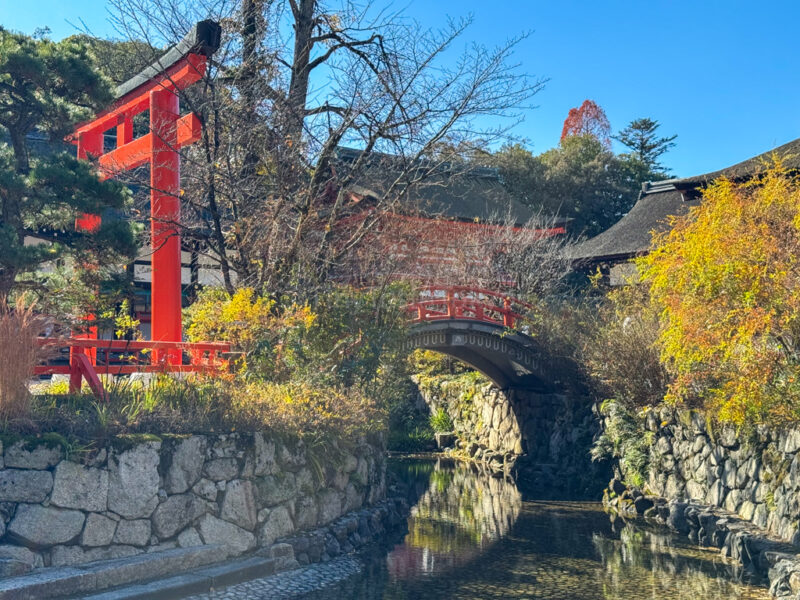
Notably, you can get an interesting fortune at Shimogamo Shrine, which is called mizu mikuji. After purchasing a blank fortune, which costs 300 yen, place it into the nearby stream.
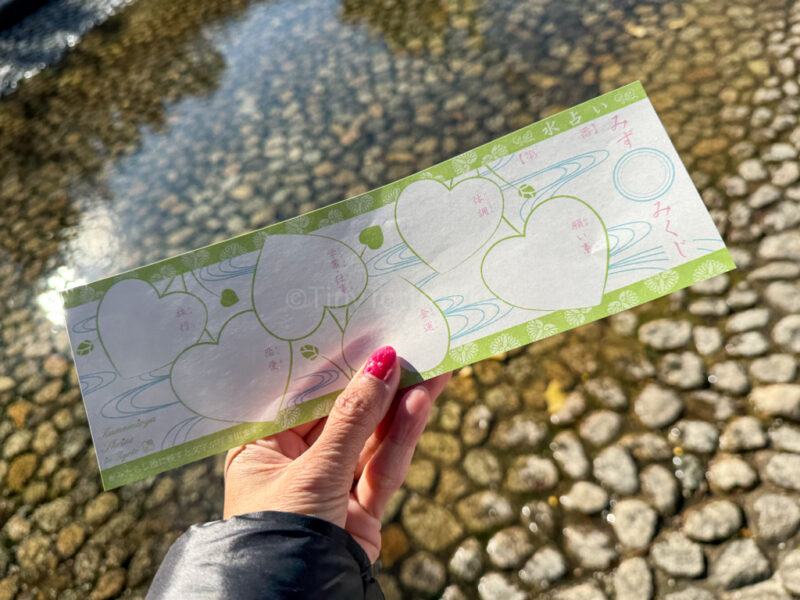
And then watch your fortune slowly show up!
I had bad luck that was supposed to improve (未吉), and strangely, it turned out true!
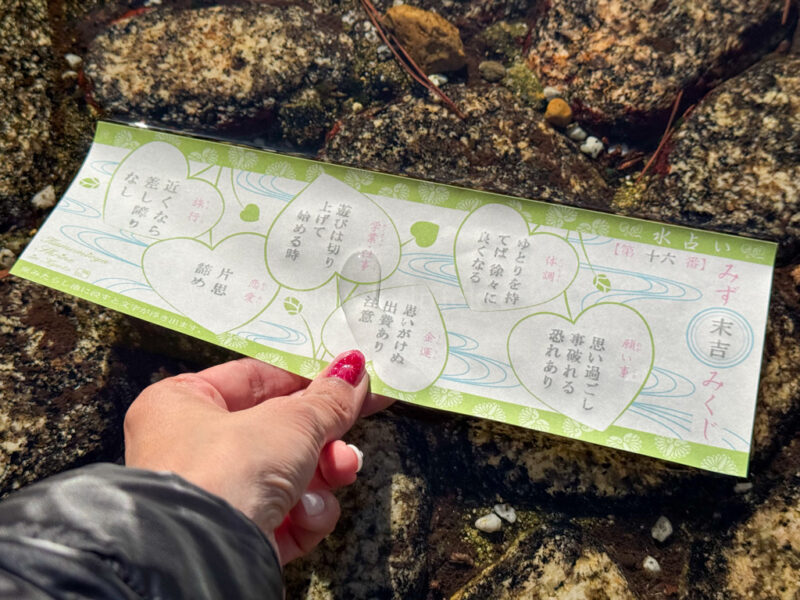
Shimogamo Shrine Omamori
The omamori (protective amulets) at Shimogamo Shrine are some of the most unique and stunning I have seen.
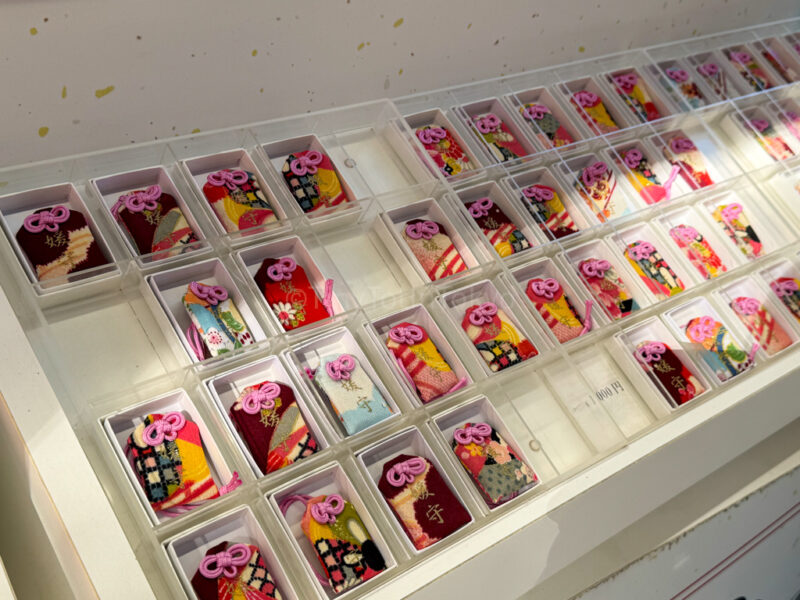
I love how colorful they are and that no two look alike.
Note that although the shrine opens at 6 AM, omamori can only be purchased from 9 AM.
Shimogamo Shrine Zodiac
Shimogamo Shrine has several subshrines, including seven called the Koto Shrine that are dedicated to Chinese zodiac signs.
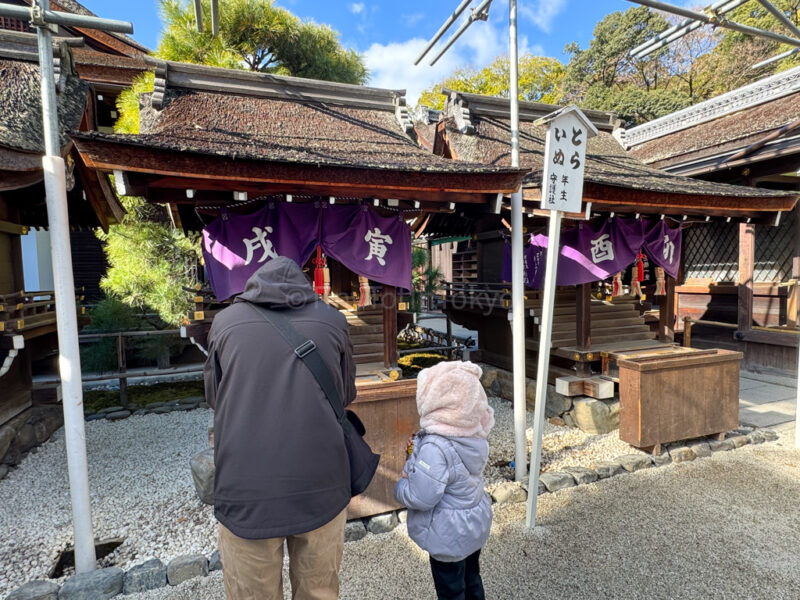
My family prayed at each of our zodiac shrines, hoping that it would bring us good luck.
Forest at Shimogamo Shrine
The shrine is also nestled in a primeval forest called Tadasu no Mori, which is where we spent most of our time. There are several shrines here that are worth visiting, but the best part was undoubtedly the beautiful autumn foliage.
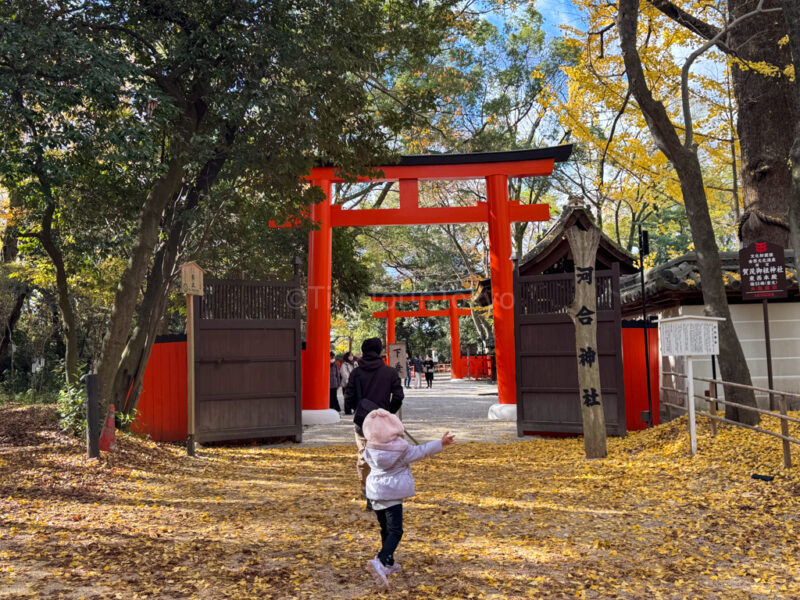
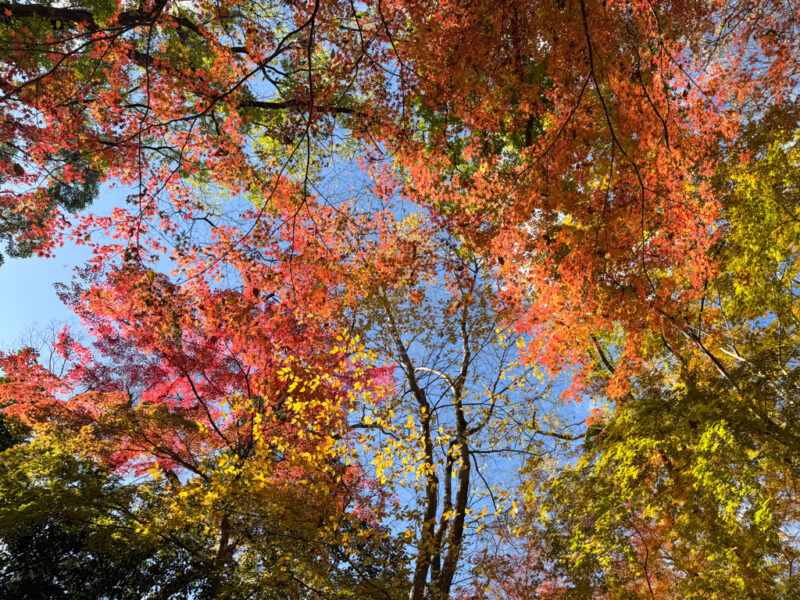
My daughter also enjoyed spotting koi fish in the water.
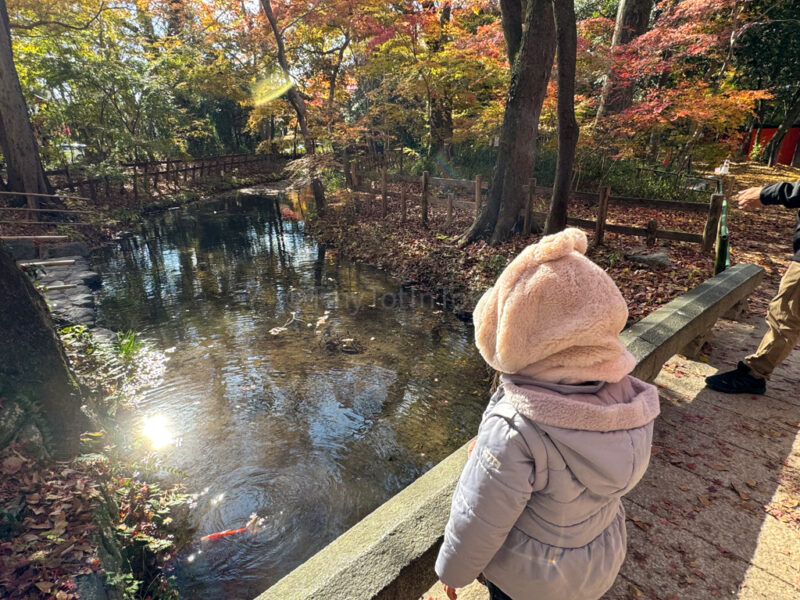
Kawai Shrine
A branch of Shimogamo Shrine, Kawai Shrine was one of my daughter’s favorite parts during our visit.
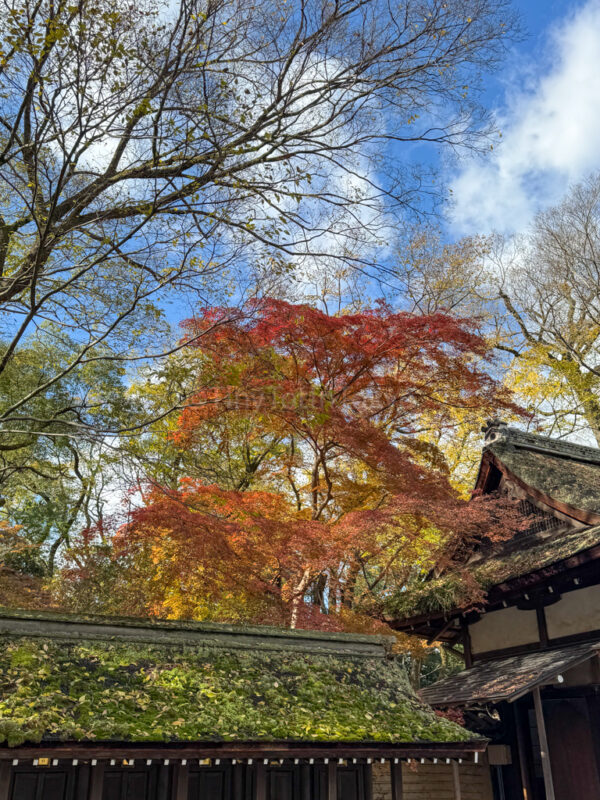
Notably, they have Mirror Ema, which are prayer plaques for beauty. Using the provided markers, you can decorate (or put “makeup”) on the plaque, which is meant to represent your ideal self, both inside and outside.
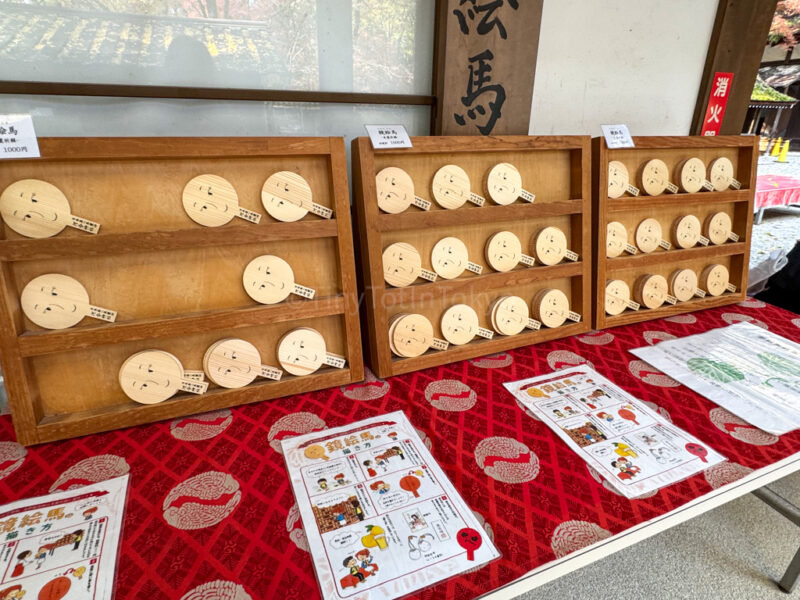
Of course, my daughter doesn’t care about makeup, and she’s very happy with what she looks like, but it was fun nonetheless for her to color on the plaque.
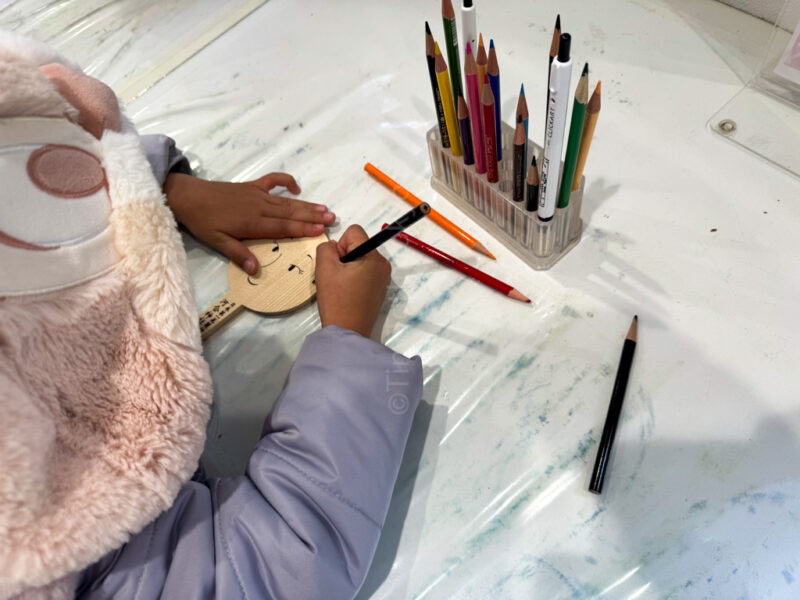
I think she did a great job!
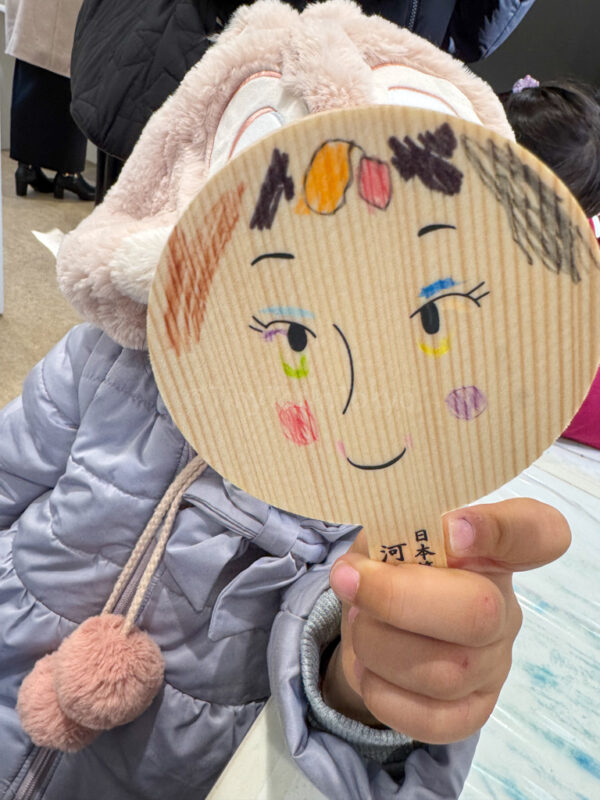
When my daughter was done, we placed her ema alongside others at the shrine. You can take your ema home, but by doing so, whatever hope you placed in the ema will not be fulfilled.
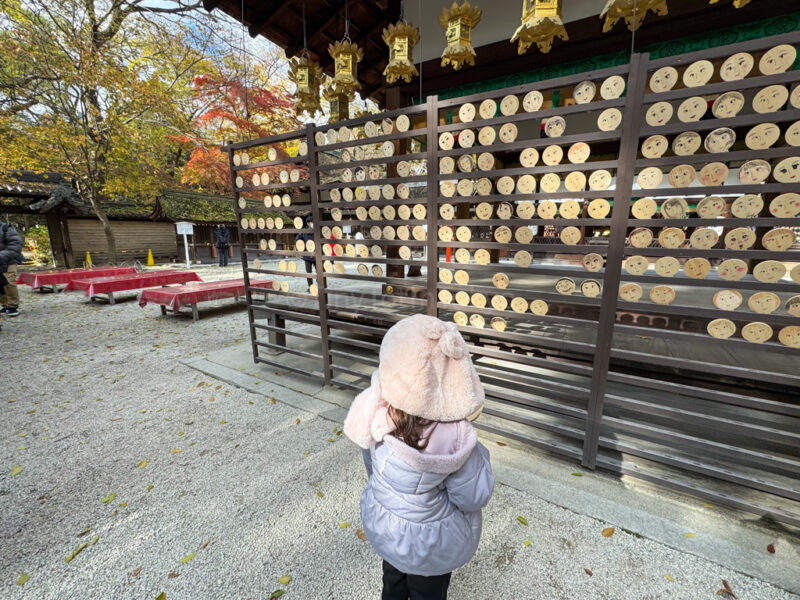
We also had a beautifying drink at Kawai Shrine, which consisted of quince and water. Whether or not we became beautiful is up for debate, but my daughter and I both enjoyed it. It was very refreshing and slightly sweet.
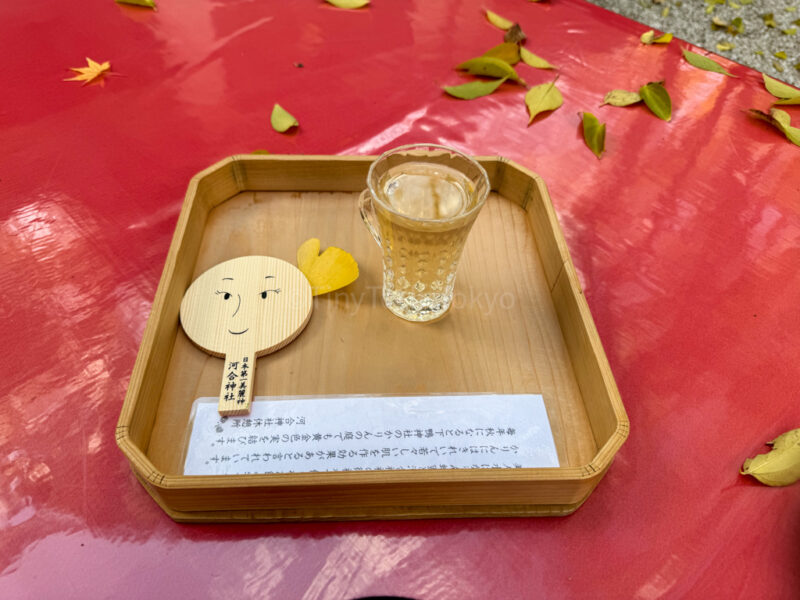
We also stopped by for tea and mochi at a small rest area in the shrine grounds called Saruya. Their specialty mochi is called Saru Mochi (monkey mochi) and is served with black bean tea.
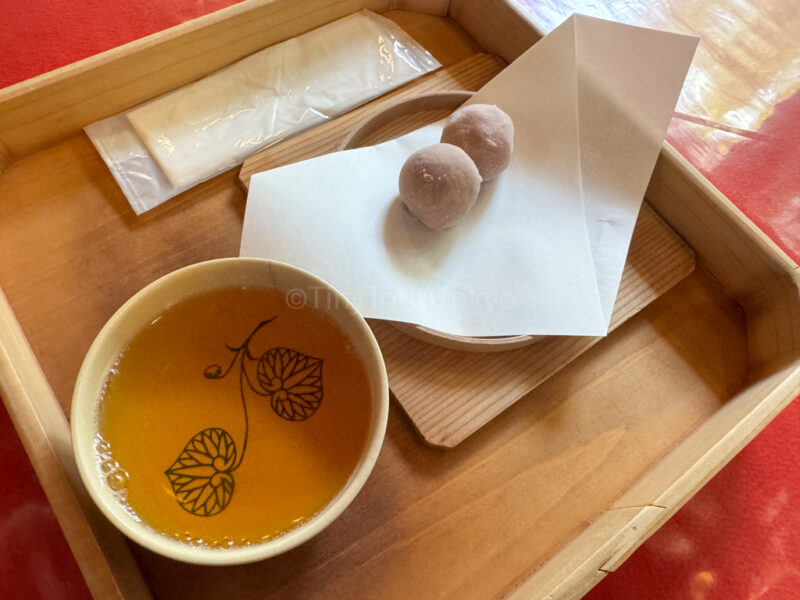
Containing red bean paste, the mochi were quite delicious, especially paired with the tea. Interestingly, the mochi is cooked using the leftover water from boiling red beans, which gives it a distinctive pinkish-red color.
Overall, we had a very peaceful day at Shimogamo Shrine, enjoying the history of the shrine as well as the stunning fall foliage.
If you have time to spare in Kyoto, I highly recommend visiting this shrine.
How to Get to Shimogamo Shrine
Shimogamo Shrine is easy to access using public transportation.
It’s less than a 10-minute walk away from Demachiyanagi Station, or a 1-minute walk from the Shimogamo Shrine Mae bus stop.

